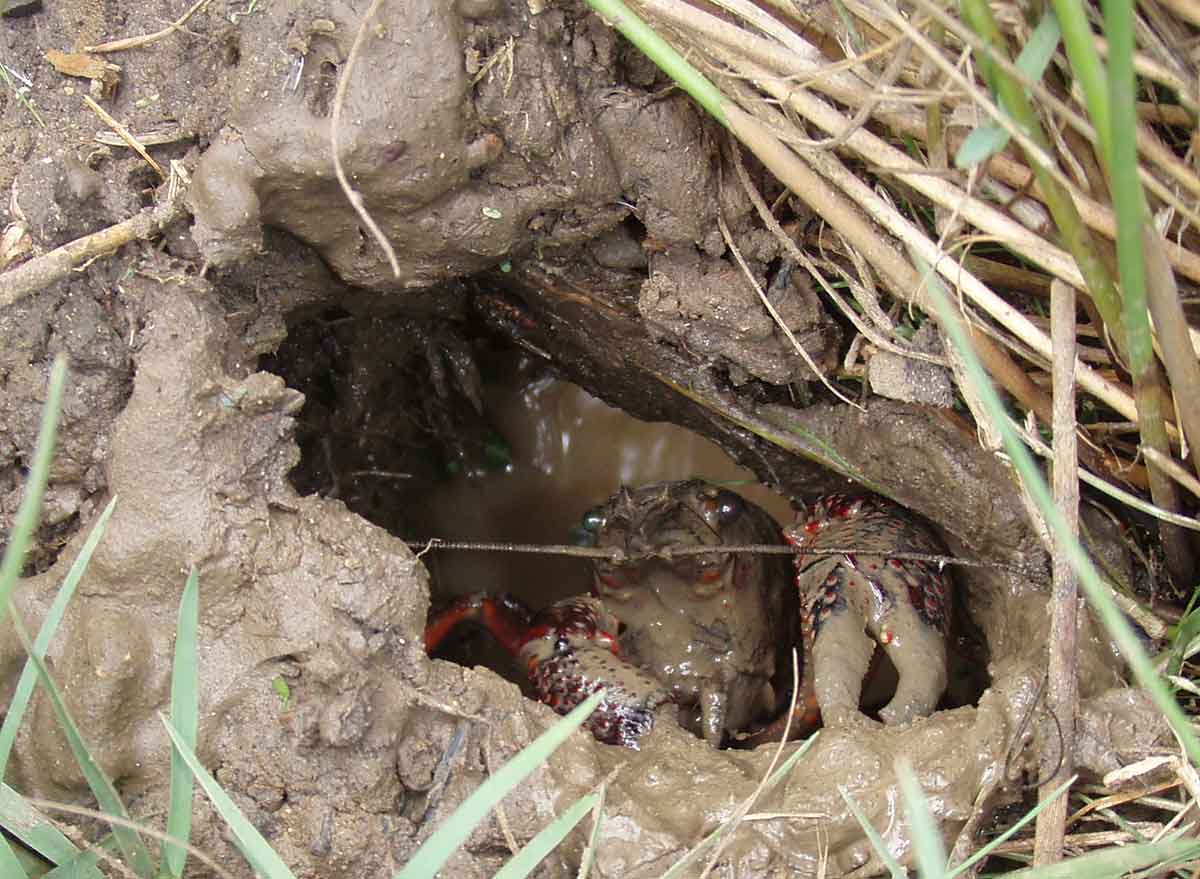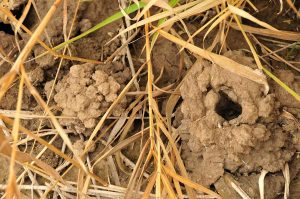
There are many species of burrowing crawyfish, all of which live underground.
Photo: Wikimedia Commons
This isn’t like white-tailed deer, or brook trout or red-tailed hawks.
Hunters and anglers and bird watchers seek those species out, all the time, and have lots of success finding them. They’re common enough that it takes a special specimen to even generate much talk.
It’s not so with burrowing crayfish. At least not in Pennsylvania.
Arnold Ortmann, a researcher from the Carnegie Museum of Natural History in Pittsburgh, spent some time exploring southwestern and southeastern Pennsylvania looking for them. He found some, too.
But that was in 1905 and 1906.
No one else bothered for the next 100-plus years.
“We didn’t know anything about the conservation status of Pennsylvania’s burrowing crayfish, at all,” David Lieb, an invertebrate zoologist in the natural diversity section of the Pennsylvania Fish and Boat Commission.
So the commission tried to change that, starting in 2014. They re-visited sites Ortmann studied, as well as some new ones.
They found crayfish, but also lots of change, most of it not good for the creatures.
But first, some basics.
Burrowing crayfish, in Pennsylvania and elsewhere, look a lot like your typical crayfish you find in the Susquehanna River, or a lot of other streams and rivers,” said David Lieb, an invertebrate zoologist in the natural diversity section of the Pennsylvania Fish and Boat Commission.
“But their biology and the conservation issues they face are far different.”
They burrow into the earth, digging down to the level of ground water, leaving tell-tale chimneys of mud above ground. They spend their lives in those underground aquatic environments, Lieb said.

Burrowing crayfish chimneys.
Photo: Wikimedia Commons
Not just any dirt is worth digging into, though. Clay is better than loose soil, for example.
“Because if you’re digging a burrow, you want it to stay a burrow. If you’ve been on the beach, and you’ve tried to dig a hole in the sand, you’ve got to keep digging that sand constantly,” Lieb said.
“Crayfish cannot make a living that way.”
Now, as for the crayfish in Pennsylvania, Ortmann found four varieties a century ago. He discovered three species in western Pennsylvania, the little brown mudbug, upland burrowing crayfish and blue crayfish, and one in southeastern Pennsylvania, the devil crayfish.
No one was especially optimistic they might still remain there.
“Obviously, when you’ve got your records from the southwest corner of the state and the southeast corner of the state, near Pittsburgh and Philadelphia, you can expect the possibility for pretty substantial impacts,” Lieb said.
The assumption going in was that mining, gas development, urban sprawl, industrialization and more human impacts almost assuredly hurt crayfish habitat, he said. Indeed, it had.
Crews visited 118 historic sites, where Ortmann had found blue crayfish, as well as 61 new ones. Many historic sites had no crayfish, Lieb said.
But the good news is some still did.
One was Schenley Park, the 450-acre oasis in the Oakland section of Pittsburgh. Established in 1889, it remains a green space surrounded by pavement. Lieb said that’s allowed crayfish to hang on.
“In the big picture, when we look at the species, we’ve had some substantial losses, but we still have a pretty decent amount of populations. This is one that we need to keep a close eye on,” Lieb said.
The story is the same with the little brown mudbug. Crews found them in spots, including near state-endangered eastern massasauga rattlesnake populations, which is noteworthy as the snakes use the crayfish’s burrows to overwinter.
There’s a “very different story” with the upland burrowing crayfish. It had a very limited range, historically. And it still does, Lieb said.
Crews found them at one of five historic sites, though they also found them at a couple of new sites, too.
“So this is looking like a rare species,” Lieb said. “It was rare. It still is rare.”
The devil crayfish likewise probably always had a very limited range in Pennsylvania. Lieb said they live in Pennsylvania’s “coastal plain,” near the tidal Delaware.
Ortmann only found them in four places, though he likely had only a little time to search for them, Lieb said. Crews working since 2014 haven’t found any at any of those sites.
But they surveyed 33 other spots, too. And they discovered crayfish in one, in Neshaminy State Park. It – like Schenley – is a “green space in a sea of asphalt,” Lieb said. It’s 339 acres in Bucks County along the Delaware River.
Finding the animals there, even if only there, was exciting, Lieb said.
“Maybe if you’re not a crayfish person you can’t understand that. But it hadn’t been seen since 1905, so it was pretty cool,” Lieb said.
“You’re chasing ghosts. But we did find one here. So it was a neat moment.”
Crews had another one in northwestern Pennsylvania, in an area Ortmann never explored.
In something that was “totally unexpected,” crews found digger crayfish – another burrowing species – in two spots. One population was discovered on state game land 101; another, smaller one, was found at Pymatuning State Park, both in Crawford County.
The species was never documented here previously, Lieb said.
The work of looking for burrowing crayfish continues. Lieb said he and his crews are sampling in new locations, and will over the next two years in an attempt to update knowledge of the animals for the next generation.
Want to see more? Check us out on Facebook, Twitter and Instagram.









